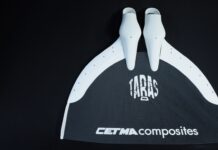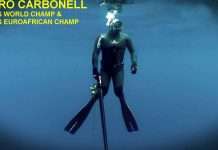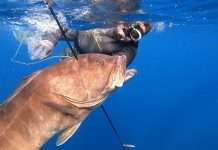(by Gabriele Delbene – photos Alberto Balbi)
The Seabream
The question of which is the most common prey among all spearfishing fishermen in the Mediterranean Sea is very easy to answer: it is the white bream, also known by the Latin name of Diplodus Sargus. It falls into the category of prey so common that trying to catch it is a perfect workout, the perfect gym. Also, very common preys such as the salema and the mullet make us learn to manage the technique of movement and approach to fish in open water. The fishing for seabream makes us an excellent gym both for fishing in open water and for fishing in the den.
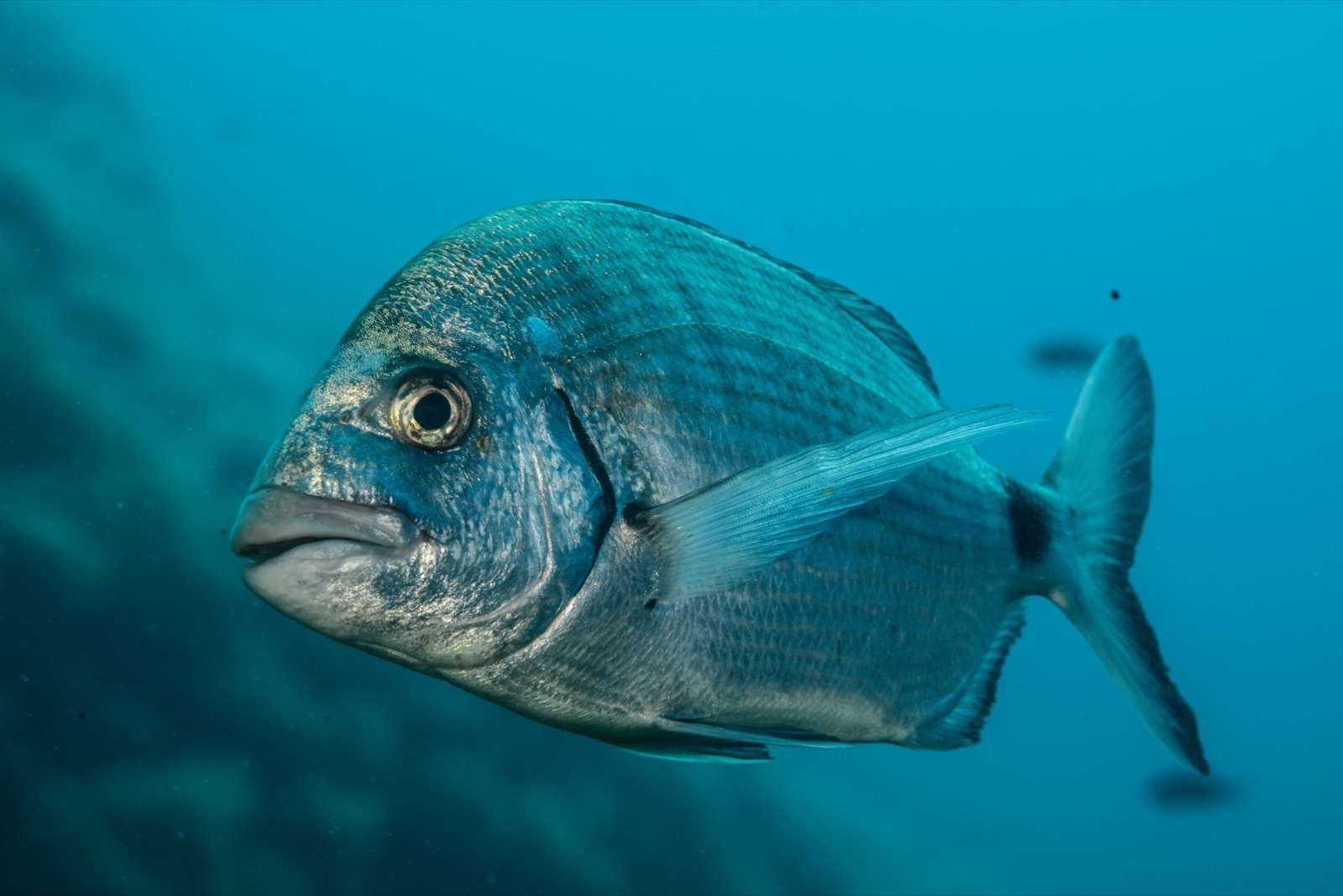
The ideal habitat for the Seabream
We can analyze the ideal habitat for the seabream especially taking into consideration the marine weather variable.
Stable marine weather conditions – High pressure
In stable conditions, with calm sea and high atmospheric pressure, the situation induces the seabream to find shelter, a gap, a den, and to remain calm by wandering and feeding around as long as the condition persists. The characteristics of the seabream den can be very different. A common feature must be relative proximity to areas of clean sand or gravel.
The slab in the seaweed
The seabream often chooses a particular slab as its “master” den. On a mixed seabed, but with a prevalence of seaweed and sandy patches with little rock, we will find concentrated seabreams where the rock intensifies creating small rocky piles that create mostly horizontal cracks.
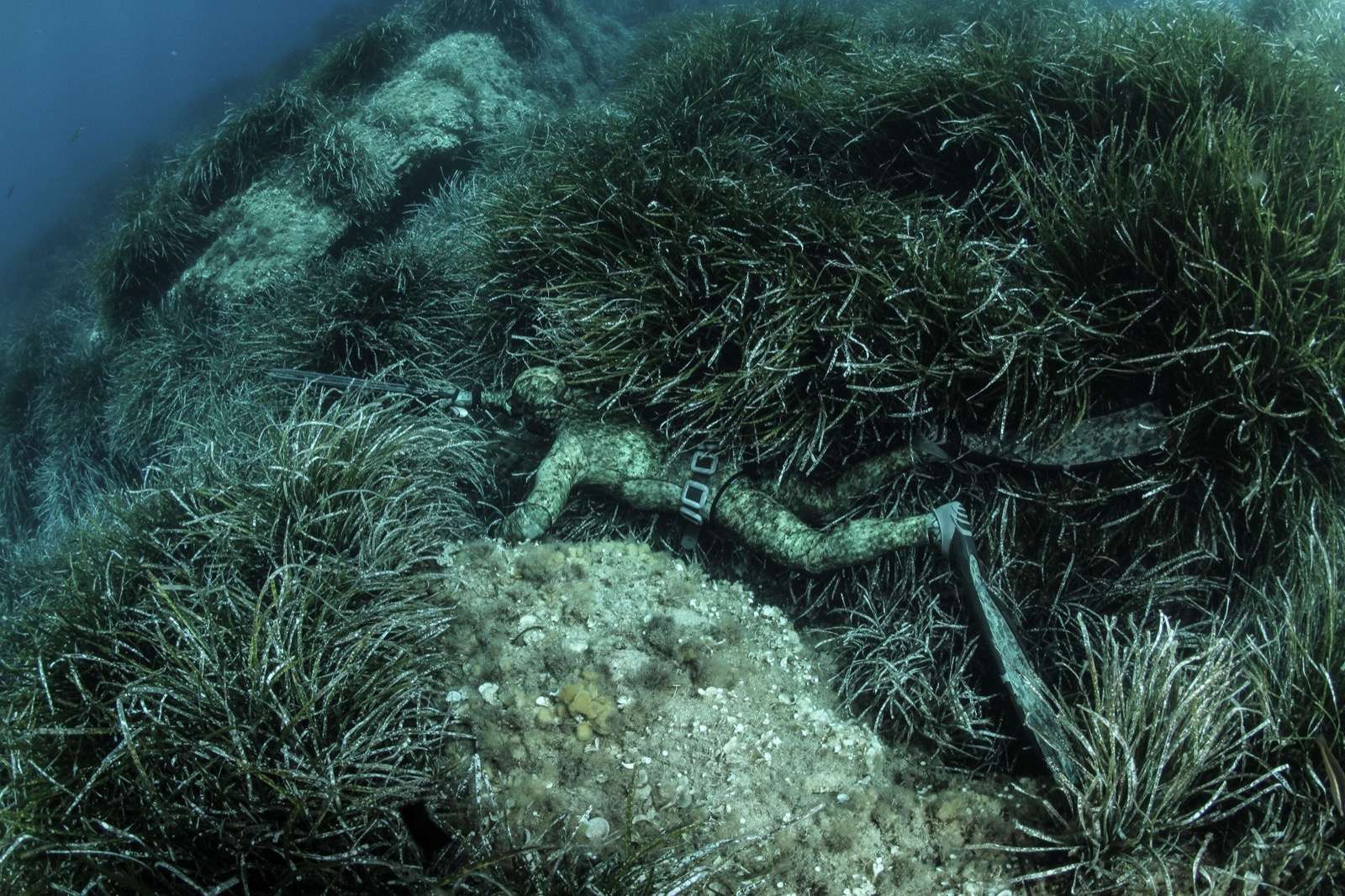
The best den, the most suitable, where we could be able to find holed up in the dark many large saragons will have a very low roof, sometimes slightly higher than the back of a 1 kg bream. It will have one chamber or several chambers, one of which is completely dark and hidden. Usually they are longer and more regular rocks, with a vaguely rectangular shape having these characteristics. They have minimum dimensions on their larger side of at least 2 \ 3 meters.
The slab in the “Roman road”
By “Roman road” is meant that rocky structure which was once a sandy or muddy coast and which with the compressions and geological phenomena that occurred over time has compacted into solid rock. Roman roads usually run parallel to the beaches and can even be miles long. They can be found at all depths that interest the fisherman. Their compact shape sometimes creates a phenomenon of erosion that digs them under and then makes them collapse one attached to the other as if to compose the classic shape of the road paved by the ancient Romans. On a Roman road of one kilometer there may be only a few slabs dug in the way that the seabream prefers. It is not easy to identify them because from above they all look quite similar. A skilled eye will not miss a small series of signs that could discover its location without having to engage in a strenuous continuous and undifferentiated ups and downs. The sand around a frequented den will have a brighter, less opaque and muddy color due to the continuous movement of the animals which will not allow the deposition of the finer sediments. The cracks in the surroundings will be more clear and vertical with little space between them. The best dens will be in the longest slabs, occupying perhaps only a few meters. A certain movement of saddled seabream, damselfish or small common two-banded seabream could indicate their access.
The grotto mushroom
The grotto is the characteristic coralligenous backdrop. It is a type of detrital concretion on hard substrate made up of various types of animal and vegetable organisms (calcareous algae) which have the particularity of fixing calcium carbonate. Over time the concretions form over time the characteristic “brain” which makes its recognition easy. Usually the expanses of grotto are monotonous, have a conformation that seems all the same and are typical of those areas where the seabed slopes gently towards the open sea. The eyelashes formed by the grotto have a limited height and are interspersed with sand or seaweed or a mixture of the two.

The so-called “mushroom farms” can be found within these monotonous expanses. The mushroom farms are sections of the seabed with high and cracked grotto islands which, being rich in ravines and openings, host the seabream much more easily. The best mushrooms are recognized because they are very jagged, sometimes with slits that cross them in several directions. The bream can also be very numerous within a single particular mushroom and once one of these situations has been found, it will be very important to mark the point with the sights on the ground or with some instrumentation capable of detecting latitude and longitude.
The cut in granite rock

In the shallows a little more often we can find the classic smooth and vertical cut. For it to be chosen by the bream it must be able to create shadow inside it, it must be no more than twenty centimeters wide and at least one meter deep. Its vertical height may vary. I once happened to find one that started at 5 m depth and reached about 15 m; it was completely full of seabreams.
The granite rock
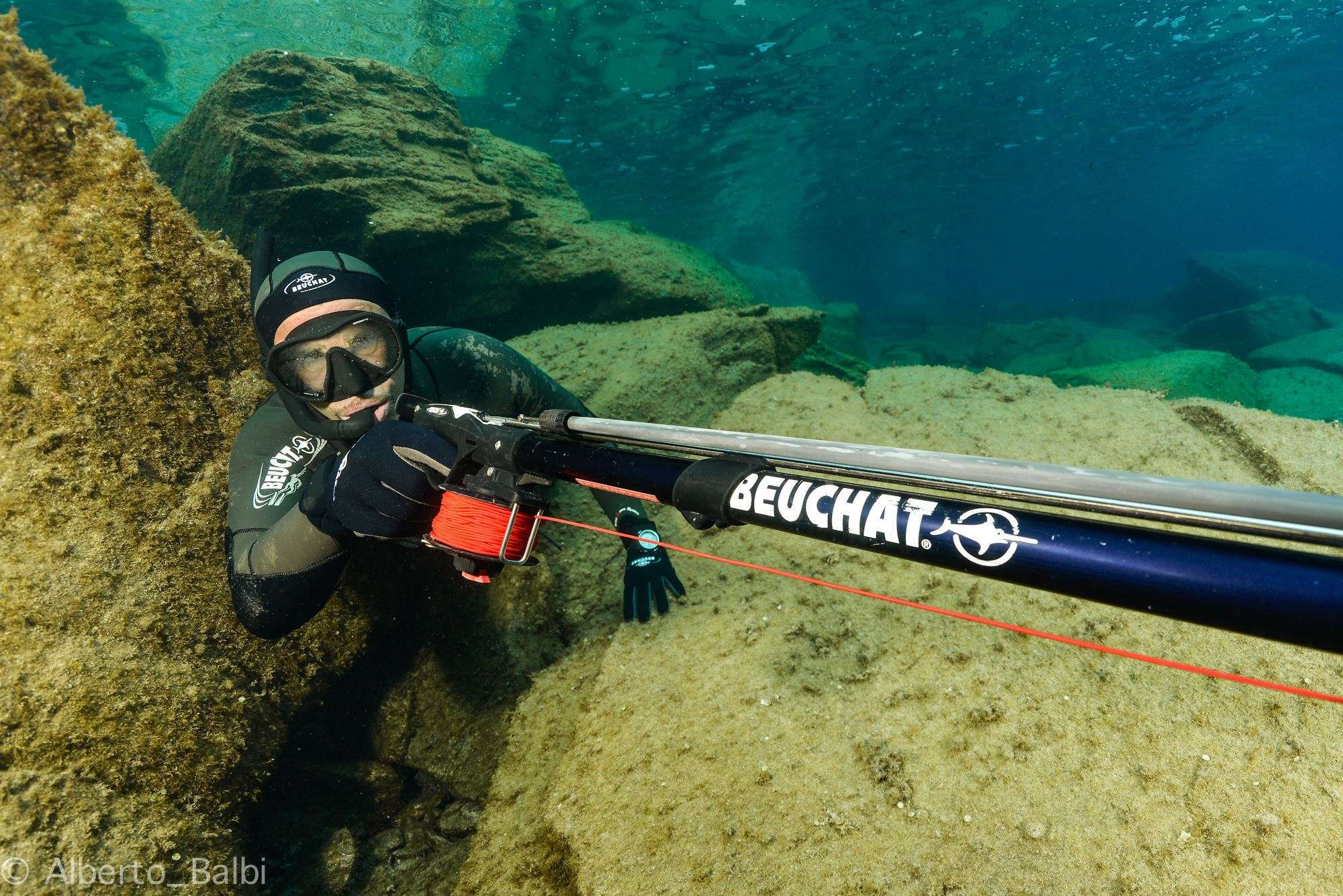
As for the classic granite boulder, the same goes for the Roman road, in the sense that we will have to grasp the presence of some tracer signals. Perhaps, compared to the Roman road which is uniformly flat, we will be better able to notice the presence of the seabreams that turn between the boulders up to signal a potential lair where their presence is more nourished.
The rock landslide
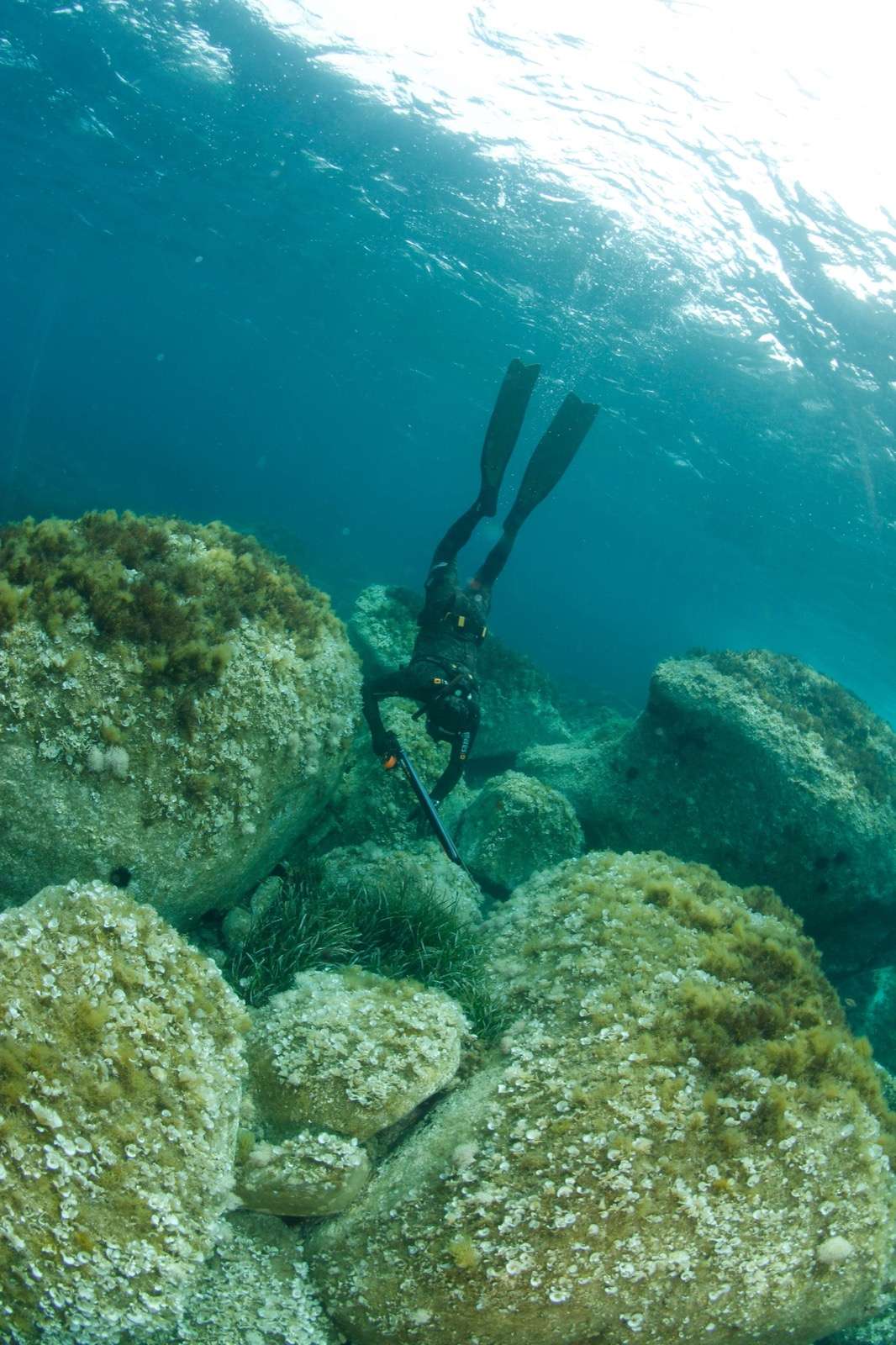
The classic landslide is made up of a myriad of stacked boulders at the base of which the seabreams in small groups are stationed where the boulders are usually larger and offer multiple more numerous and deep ravines and tunnels.
Unstable marine weather conditions – low pressure
If the pressure drops, creating instability, generating currents and winds that can also alter the wave motion, the seabream feels the change and begins to move to go and look for nourishment where the situation suggests. The classic case of the “perfect” slab full of seabreams that after two or three days of visits is completely uninhabited is known, especially in the competition field.
The mimetic movement
When the situation is meteorologically unstable, the seabream begins to abandon its lair and seek wandering nourishment. It’s time to look for them in open water. Obviously, a great deal has already been written about fishing for seabream in open water and the most interesting things have been said by the ambush specialist and fishing philosopher Giorgio Dapiran. The pure ambush technique can be a solution, but only within a behavior that allows us to sight and approach a seabream even from a long distance. The behavior that can lead us to successful shooting, the one that has been seen most effective and applied by many specialists, is that of ambush. Ambush is a technique based on the theory of movement used as mimicry. In practice, already from the surface we will have to implement a series of precautions that make us perceive how non-aggressive in movement.
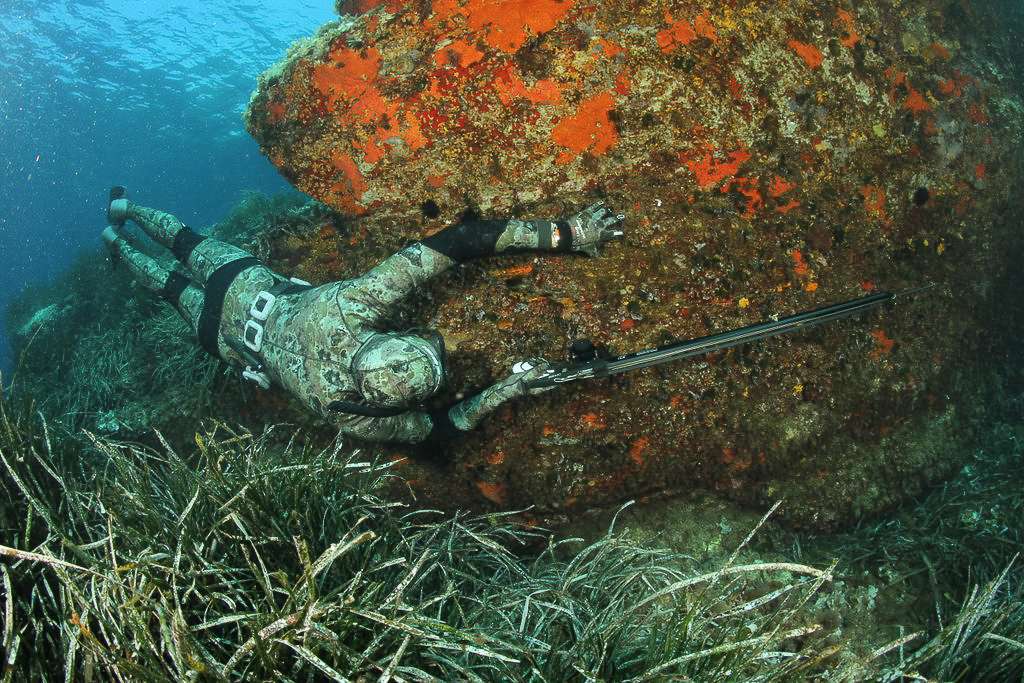
So we will need to ballast with precision of half a kilo that will allow us to be negative at the altitude where the action will take place, but not too much. We will have to plan to kick little to advance, perhaps using the free arm in the final stages. For strategic advances on a wall, for example, we will use the environment to conceal our presence, while we will try to identify our prey while it feeds or wanders gently around a possible refuge. Using the environment means camouflaging us both visually and acoustically. We know that the lateral line of the fish is very sensitive and we can deceive it a little by exploiting the same slight lapping of the wave where we will better hide our presence in the irregularities of the wall.
Whether or not the presence of fish has been identified, we will have to organize a virtuous path with a first strategic stop. The stage must be reached at a speed of advance which is such as not to frighten the small fishes always present in rocky environments. The harmonious exploitation of the obstacles found on our virtuous path, with aquatic, slow and highly calculated movements, will be the basis for the construction of the capture opportunity. The distance from the obstacle must be such as to almost rub your shoulder against it. The same thing can be said of the distance between our belly and the ground, taking care that the shoulders are always higher than the hips, to avoid raising the flag legs that would make the flipping escape from afar. Depending on how the situations present themselves, the final shot will take place with a fish caught surprised to eat behind or under an obstacle, or much more reasoned and calculated in the approach of the fish intrigued by the appearance.
Fishing in the den
Even in den fishing, the principles of mimetic movement help us for effective action. Approaching carefully and with the rifle ready to shoot will allow us to take the most curious specimens and close to the mouths of the dens. The sea bream has the particularity of wedging itself even in the most inaccessible meanders, therefore a four-pointed harpoon will be useful and indicated, narrow and light but of sure grip and difficult to get stuck.

The observation of the den upside down will be very useful to scrutinize even the smallest of the holes where we will often find the most elusive bream. The use of the torch as late as possible and only as a last weapon, given that the bream have learned to associate the danger with the light, or after a shot, using the lamp in the den for a long time, the exit of the fish is often observed even from the so-called master chambers.
Gabriele Delbene
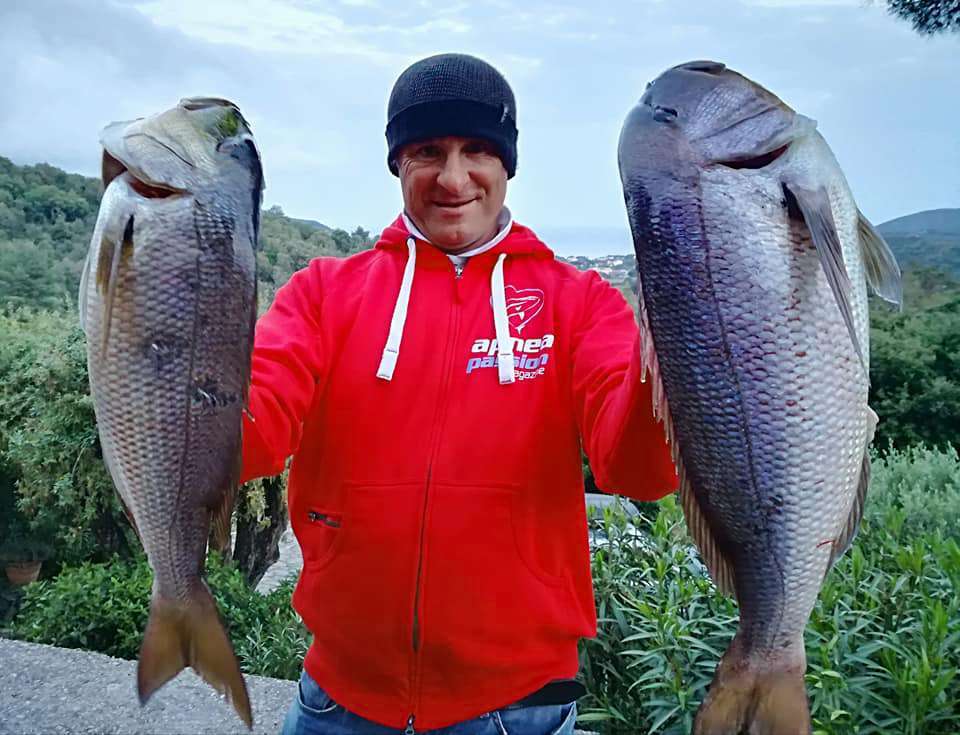
Gabriele Delbene, year ’66, born in La Spezia, Liguria, Italy, is a great Spearfishing Champion, who has reached important results in International competitions. Gabriele has also a degree in Osteopathy and Physical Education and inventor of the “global ascent manouvre”.
Main spearfishing titles
Bronze medal at 2018 World Championship for Clubs, Biserta, Tunisia
World and European Teams Vice-Champion
Winner of 5 International trophies
World Record Abyssal Spearfishing (- 62,4 meters)
Stage by Gabriele Delbene
Gabriele today organized extremely intersting, useful and deep spearfishing stages, that he describes this way: “Spearfishing, as any other human activity, can be taught. The experience of a spearfishing stage needs great effort, buti s also strongly educational. Stage is organized with maximum 4 people and for such reason it is thought to define and solve individual technical issues. Important focuses are aimed to working on the breathing of the spearo, who has different needs compared to the freediver, to optimize performance still maintaning the hoghest elvel of safety. All work is focused on spearfishing, si entrance tests, spearfishing actions of the student, commented video during the technical point in the evening in front of a wide tv screen, lessons applied to the episodes and encounters of the day, all are part of the experience that strongly and quickly improves statistics of sighting of fish, and so consequent catches.
Contacts:
email: gabriele.delbene@libero.it
mobile: +39 3339598374




